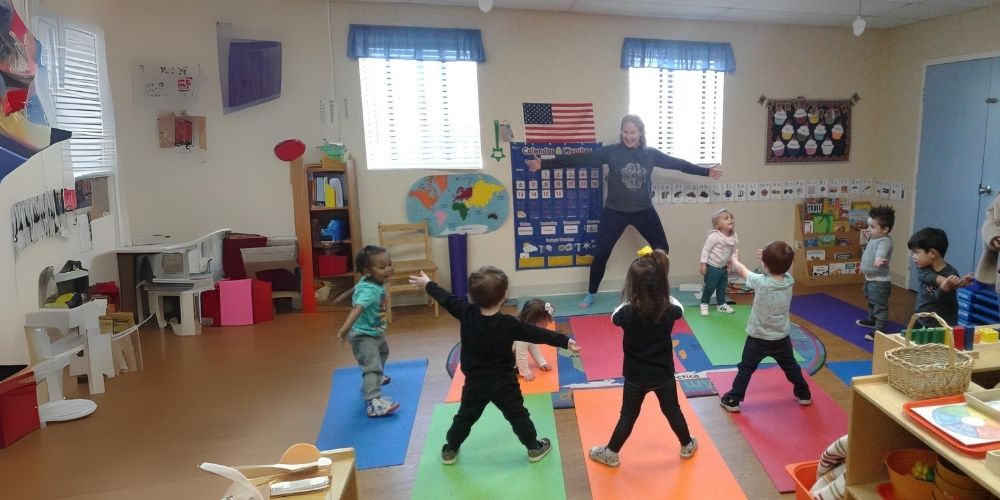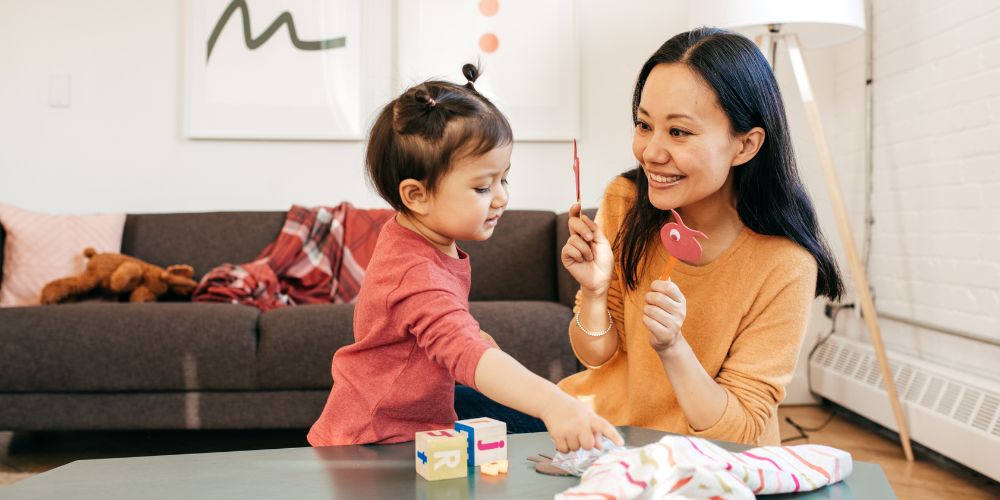Is Your Child Ready for Toilet Training? Tips from Montessori Experts
Discover a seamless approach to supporting an exciting milestone in your child’s development with our Montessori approach to toilet training!
In Montessori settings, we prefer to use language such as toilet-learning or toilet-training rather than potty-training because rather than being a singular task that can be associated with shame or rewards and punishments, toilet-learning follows the progression of a child’s natural interest in understanding how their body works and building their independence towards learning this practical life skill.
We’re sharing our expertise on signs of toilet-readiness and tips for setting up a child-friendly bathroom. Additionally, we will discuss the important role adults play in their child’s toilet-training progression, how to handle accidents with patience and reassurance, and language for successful (and shame free!) toilet-training.
Assessing Your Child’s Toilet-Readiness
To help you navigate this exciting milestone with your child, here are some cues that you can be on the lookout for that indicate your child may be ready to start the toilet-training process!
- Curiosity Awakens: Have you noticed your child being fascinated by others’ use of the toilet, asking questions about the process, or wanting to mimic the process? A child’s natural curiosity leads them to show interest in what others are doing, and this includes time in the bathroom.
- Dry Diaper: Keep an eye out for your child to maintain a dry diaper for several hours at a time or if their diaper remains dry after a nap or first thing in the morning.
- Announcements: Listen out for your child’s announcement that they are ready to use the toilet! Whether they’re giving you a heads-up before going, announcing that they have gone, or sharing their recent toilet experience, recognizing and responding to their body’s cues are important to note.
- Removal of Clothing: Notice if your child is able to independently remove their clothing, particularly their shorts/pants and underwear, as this is an important requirement for successful and independent toileting.
Here are some tips for this space:
- Central Location: While it may not seem convenient initially, keep their child-sized, moveable toilet in the bathroom instead of frequently relocating it within your home. This way, your child can always find it whenever needed and can visit it regularly. You can also choose to use a smaller seat insert placed on top of the toilet seat so that your child becomes accustomed from the beginning to stepping up and using the regular toilet.
- Clothing Organization: Have a bucket ready in the bathroom for a child to place any wet clothing into, as well as paper towels or cloths to clean up any accidents, and fresh clean clothing to change into as needed. Accidents are bound to happen throughout this process and by organizing piles of clean clothing and wet clothing, you can help your child grasp the significance of promptly changing into clean clothes after accidents. This also promotes their understanding of personal hygiene and cleaning up after themselves.
- Getting Dressed: When selecting your child’s daily clothing, prioritize garments that they can easily put on by themselves and pull up and down. Summer months make this easier as tight pants, jeans with buttons, and layered dresses can be avoided; we recommend shorts with an elastic waist or dresses which are easier and faster for children to both remove and put on themselves.
By making simple adjustments in their bathroom setup and routine, your child will begin to learn their own toilet-training schedule and needs.
The Adult’s Role
The adult’s role in a child’s toilet-training is to support the child in the process of learning to use the toilet but it’s important not to become emotionally involved. You can:
- Build Confidence: Build your child’s confidence and independence by providing aids like a foot-stool to help them comfortably reach and use the toilet and sink.
- Establish a Routine: Incorporate toilet time into your child’s daily routine, such as upon waking up, before leaving the house, or before naptime. A consistent routine and the opportunity to frequently practice will help your child more quickly build their skills and comfortable level with this process.
- Practice, Practice, Practice: Instead of asking if your child needs to use the toilet, make it an ongoing opportunity to try. For example, instead of saying ‘Do you need to go potty?’ you can say ‘In 2 minutes we’re going to clean up and go to the bathroom before we go to the park’. This shift helps avoid power struggles and incorporates frequent visits to the bathroom as a regular part of the routine.
Maintaining consistency in ownership, as well as establishing a cohesive routine between home and school, play a crucial role in your child’s independent toilet training. The phrases below are key for successful toilet training as they reinforce consistent language and routines, furthering your child’s understanding and progress in this important milestone.
- Avoid Force: Never physically drag or force your child to use the toilet, as it can create anxiety or even resistance; when a child begins refusing to use the potty it can lead to discomfort and potential infections. Allow your child to progress at their own pace to avoid regression and refusal of using the toilet entirely.
- Balance Feedback: While it is natural to feel excited, it is more beneficial to stay calm and supportive – we want to praise the process as much as the end result. Treat using the toilet as a normal activity and refrain from scolding or excessive congratulation. For example, even if a child has an accident, if they recognized that they needed to use the bathroom but didn’t quite make it in time, you can praise that they listened to their body and that we’ll keep practicing to make it to the potty in time.
- Respect their Personal Development: There is no one specific age that is right for all children to begin or complete the toilet training process – following your child’s lead and working with them when they are ready will yield much smoother and faster results than trying to force them to be ready on an arbitrary timeline.
- Respect their Timing: Interrupting your child when they are in the middle of something else to use the toilet breaks their concentration and forces them to go when they might not want to, which can lead to resistance in using the potty. It is best to wait until they are finished with an activity before having them visit the bathroom.
- Maintain Patience: Remember that every child learns at their own pace and that just as it took multiple attempts over a period of time to learn to walk and run without falling, toilet training is a new skill that similarly requires lots of consistent practice to fully master. Patience is key in supporting a healthy toilet-training journey.
How to Handle Accidents
In the moments when your child doesn’t make it to the toilet on time, it is important to stay calm and provide reassurance to prevent any feelings of shame or fear. You can say, “I see you are wet. Let’s get some clean clothes for you to change into.”
To foster their independence, allow your child to change their wet clothes at their own pace and offer assistance if requested or if they feel overwhelmed. If you notice your child is preoccupied and unaware of any mess, clean up the accident without interrupting their activity, and wait until they are finished before suggesting a change of clothes.
Temporary setbacks in toilet training may arise due to life changes such as the arrival of a younger sibling, moving to a new home or other family transitions, but these challenges often resolve themselves when adults maintain consistency and avoid making a big fuss.
Is Your Child Ready?
We hope you have a new-founded confidence in your ability to begin or continue your child’s toilet-training journey! The Montessori approach of recognizing the small yet exciting cues of dry diapers, establishing a child-friendly bathroom, and supporting your child with reassurance, patience, and key phrases centered around a child’s growth and independence is beneficial to toilet-training.
We recommend that parents take advantage of the summer season when schedules are often more relaxed and children are wearing looser and easier-to-remove clothing to continue/reinforce their child’s toilet-training process so they are able to practice and develop a sense of confidence in this important life skill before returning to school in the Fall.
While exploring this exciting and transformative process your child will experience, we invite you to check out how our other Montessori philosophies and curriculum relate to daily life skills and learn how Children’s Manor & Magnet Montessori Schools can positively impact your child’s education and future. You can learn more about CMMS & schedule a tour or visit us at an upcoming Open House Event. We hope to connect soon!





